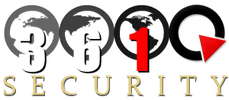Country Profile: India
|
Executive Summary
With a staggeringly large population of over 1.2 billion people, India is overwhelmed with complex social issues. The state has many long-term challenges that it has not yet fully addressed, including poverty, inadequate physical and social infrastructure, limited non-agricultural employment opportunities, inadequate availability of quality basic and higher education, and accommodating rural-to-urban migration. However, stringent economic reforms by the state’s government are ensuring India's emergence as a regional and global power. Brief History
With a rich history extending to the Indus Valley civilization of the second and third millennia B.C., India has undergone a series of dramatic religious and cultural transformations leading up to the modern era. By the 19th century, Great Britain had become the dominant political power on the subcontinent. However, years of nonviolent resistance to British rule under the guidance of Mohandas Gandhi and Jawaharlal Nehru led to Indian independence in 1947. Large-scale communal violence took place before and after the subcontinent partition into two separate states - India and Pakistan. The neighboring nations have fought three wars since independence, the last of which was in 1971 and resulted in East Pakistan becoming the separate nation of Bangladesh. Political Structure
Economic Structure
Social Structure
Religion:
|
Ethnicity:
|
Operating Organizations
|
Political Groups:
Other Groups:
|
Terrorist Groups:
|
Allies and Enemies
- Regional Allies: Russia
- Regional Enemies: Pakistan
- Global Allies: United States, United Kingdom, Japan
- Global Enemies: N/A
Country Trajectory
India is facing pressing problems such as significant overpopulation, environmental degradation, extensive poverty, and widespread corruption. Further exacerbating these issues is the increasing presence of terrorist activity in the state. Comments from National Security advisor Advisor M K Narayanan in 2008 were indicative of this rise in the number of terrorist organizations, saying that there are as many as 800 terrorist cells operating in the state with "external support". The task of rectifying this instability in domestic security will ultimately lay upon the state’s massive youthful population.
India is facing pressing problems such as significant overpopulation, environmental degradation, extensive poverty, and widespread corruption. Further exacerbating these issues is the increasing presence of terrorist activity in the state. Comments from National Security advisor Advisor M K Narayanan in 2008 were indicative of this rise in the number of terrorist organizations, saying that there are as many as 800 terrorist cells operating in the state with "external support". The task of rectifying this instability in domestic security will ultimately lay upon the state’s massive youthful population.
Current Events
http://www.nytimes.com/2013/02/23/world/asia/warning-signs-seen-ahead-of-india-bombings-in-hyberabad.html
http://www.reuters.com/article/2013/02/26/us-india-budget-railways-idUSBRE91P0CT20130226
- Feb. 22nd, 2013: On February 21st, 2013, a series of explosions detonated within about 150 yards of each other near a crowded bus stop in the neighborhood of Dilsukh Nagar, an area packed with shops, restaurants, theaters and a huge produce market. New information about India’s deadliest bombing since 2011 suggested the attacks had been long planned, raising questions about whether they could have been prevented.
http://www.nytimes.com/2013/02/23/world/asia/warning-signs-seen-ahead-of-india-bombings-in-hyberabad.html
- Feb. 26th, 2013: India reined in spending on its vast but decrepit rail network, setting the tone for what is expected to be the most austere federal budget in years as the government struggles to tame its fiscal deficit.
http://www.reuters.com/article/2013/02/26/us-india-budget-railways-idUSBRE91P0CT20130226
Sources
- http://web.archive.org/web/20071013151250/http://www.religiousintelligence.co.uk/country/?CountryID=60
- http://www.mha.gov.in/uniquepage.asp?Id_Pk=292
- https://www.cia.gov/library/publications/the-world-factbook/geos/in.html
- http://www.geneva-academy.ch/RULAC/current_conflict.php?id_state=107
- http://www.nytimes.com/2013/02/23/world/asia/warning-signs-seen-ahead-of-india-bombings-in-hyberabad.html
- http://www.reuters.com/article/2013/02/26/us-india-budget-railways-idUSBRE91P0CT20130226
- http://articles.timesofindia.indiatimes.com/2008-08-12/india/27921564_1_external-group-or-module-terror-modules-copycat-systems
